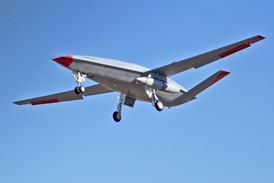Discussions at the recent IATA AGM reflected the industry’s progression to a new phase in its sustainability journey, where theory firmly gives way to action.
Broadly, most airline leaders are still in agreement on the principles. The industry has a net-zero roadmap, which talks up the airline sector’s desperation for more sustainable aviation fuel (SAF), saying government regulation is needed to encourage the huge rise in production that is required. IATA has made sure that it is adding detail to the planning, whether for SAF or other key contributors to the roadmap. It also acknowledges that no-one can confidently predict the mix of factors that will eventually deliver net-zero emissions.
But it is important to note that as the airline industry makes positive steps across the sustainability landscape, fault-lines are also becoming more evident.

In some cases, it is difficult to distinguish between genuine scepticism on the net-zero plans and attempts to highlight the urgent action that is required. Recent comments attributed to Qatar Airways chief executive Akbar Al Baker on the lack of action on SAF, for example, seemed to be an effort to corral governments into action on the issue, rather than an admission of defeat.
But there are areas where airline leaders and others have genuine concern over the roadmap.
Some are worried, for example, that the desire for game-changing technological breakthroughs could come at the expense of efficiency improvements based on updated versions of existing propulsion technologies. As they reasonably point out, the airframes that will dominate the fleet beyond 2050 exist today and are designed for such engines.
“Don’t forget we need to run the industry in the interim,” said one chief executive during the AGM.
Then there are the geographical discrepancies that are already becoming apparent in the nascent stages of the SAF industry’s development, with regions such as Africa and Latin America yet to make any headway on the issue. Already, there is a sense of resignation among some chief executives from airlines in those regions about the pathway ahead. Exacerbating that dynamic, positive moves in one region, such as the US Inflation Reduction Act, can lead to fatalism regarding prospects elsewhere.
There is also a growing list of reports from outside experts that interrogate the sector’s plans to hit net-zero. Some of those reports dismiss the idea that breakthrough technologies will have any meaningful impact before 2050. Some say the need for carbon-capture is being underestimated and will undoubtedly need to be a key part of the mix. Other reports highlight factors such as the huge, far-from-guaranteed investment in ‘green energy’ that will be required to produce all of the future SAF. Some question where the SAF feedstocks will come from.
That is before one even considers the evidence-to-come regarding the emissions reductions genuinely achieved by SAF, and what might be unearthed on non-CO2 impacts.
Most of the aforementioned challenges and viewpoints, alongside others, are acknowledged by even the most committed airline sustainability advocates. But the fault-lines will need to be addressed over the coming years as part of an honest and transparent approach to the sustainability journey, which will mean answering some difficult questions.
Ultimately, it will not always be possible to reside in the comfort zone provided by ambiguity over the eventual mix of factors that will deliver net-zero.
Read the newsletter for free every week by signing up to the Airline Business Weekly Briefing
















